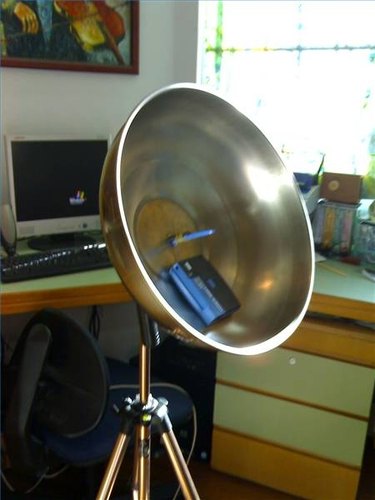
Wireless networking antennas can be manufactured at home using simple, everyday items and a minimum of knowledge about antenna physics. Two main types of antennas, the directional and omnidirectional, relate to the direction and intensity of the transmitted wave pattern. The average backyard engineer can construct a homemade Wi-Fi antenna in about an hour.
Step 1
Decide on a use for the antenna. The directional type can reflect signals a great distance, but has an angle of deflection that restricts the signal's width to about 30 degrees. This antenna would be used for long distance communication, but would not work well as a local access point's primary transmitter. Close range, widespread propagation can be sent by a "stick"--an upright antenna that throws its signal in all directions--or by an omnidirectional antenna.
Video of the Day
Step 2
Remove the handle on the back of the pan lid. This will probably expose one or two holes in the rear of the lid, which can be used to run antenna cable. If this hole is unavailable, drill one near the center.
Step 3
Mount the Wi-Fi equipment's standard antenna (node) to the inside center of the pan lid. This will cause the wave form from the antenna to be concentrated and reflected in one direction. Many different reflectors have been used, such as metallic cans or pipes. The parabolic dish will be generally better for the amateur builder because it has a wider signal angle.
Step 4
Mount the completed Wi-Fi dish at a receiver and test the signal. Some larger dishes have been known to throw a signal as far as nine miles under ideal conditions.
Video of the Day